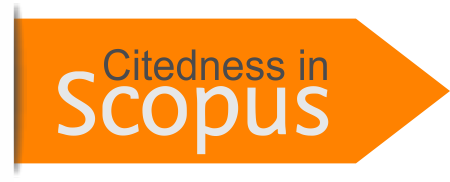Procrustes Analysis of Indonesian Mortality Table Iv and Indonesia's Death Rate During Covid-19 Pandemic
Abstract
The level of accuracy to calculate the premium is one of the main points for an actuary to determine the criteria of product which is offered by an insurance company to customers. The main reference in this accuracy is the mortality table. The last mortality table made by AAJI (Asosiasi Asuransi Jiwa Indonesia) was Mortality Table Indonesia (MTI) IV which was published in 2019. However, unexpectedly, the Covid-19 pandemic occurred in early 2020 which caused the death rate to be higher than normal situation. This study aims to compare MTI IV which was made with assumptions before the Covid-19 pandemic according to the death rate in Indonesia during the Covid-19 pandemic. This study uses secondary data, by finding the probability of death in Indonesia by calculating the death rate in Indonesia based on population data according to age group classifications obtained from BPS (Badan Pusat Statistik) Indonesia. Furthermore, both data were compared using Procrustes analysis to calculated the level of conformity. The results showed that 75.97% of the data matched MTI IV with the death rate during the pandemic. If the insurance company wants more accurate results, they can be adjusted to the Indonesian Mortality Table using data during the pandemic. If it is quite satisfied with the accuracy of 75.97%, the company can continue to use MTI IV.
Keywords
Full Text:
PDFReferences
Carey, J. R., & Roach, D. (2020). Life tables, Princeton University Press. (pp. 26-58).
Badan Pusat Statistik, “Jumlah Penduduk Menurut Kelompok Umur dan Jenis Kelamin, 2020,” 2021. https://www.bps.go.id/indikator/indikator/view_data_pub/0000/api_pub/YW40a21pdTU1cnJxOGt6dm43ZEdoZz09/da_03/1 (accessed Aug. 03, 2021).
Badan Pusat Statistik, “Jumlah Penduduk Menurut Kelompok Umur dan Jenis Kelamin, 2019,” 2020. https://www.bps.go.id/indikator/indikator/view_data_pub/0000/api_pub/YW40a21pdTU1cnJxOGt6dm43ZEdoZz09/da_03/2 (accessed Aug. 03, 2021).
Giattino, C., Ritchie, H., Roser, M., Ortiz-Ospina, E., & Hasell, J. 2020. Excess mortality during the Coronavirus pandemic Covid-19. Our World in.
Gunathillake, A., Savkin, A. V., Jayasumana, A., & Seneviratne, A. (2016), February. Sensor Localization using Signal Receiving Probability and Procrustes Analysis. In International Conference on Sensor Networks 2, pp. 113-120.
Irsan, M. Y. T., Rosmawati, L., & Sudding, F. N. F. (2020). Sosialisasi Peranan Profesi Aktuaris pada Industri Asuransi dan Asuransi untuk Kehidupan kepada Masyarakat Cikarang. Academics In Action Journal of Community Empowerment, 1(2), 119-125.
Johnson, R. A., & Wichern, D. W. (2014). Applied multivariate statistical analysis 6. London, UK:: Pearson.
Kern, J. L. (2017). On the correspondence between procrustes analysis and bidimensional regression. Journal of Classification, 34(1), 35-48.
Maqableh, M., & Alia, M. (2021). Evaluation online learning of undergraduate students under lockdown amidst COVID-19 Pandemic: The online learning experience and students’ satisfaction. Children and Youth Services Review, 128, 106160.
Ross, A. (2004). Procrustes analysis. Course report, Department of Computer Science and Engineering, University of South Carolina, 26.
Saito, V. S., Fonseca-Gessner, A. A., & Siqueira, T. (2015). How should ecologists define sampling effort? The potential of procrustes analysis for studying variation in community composition. Biotropica, 47(4), 399-402.
Siswadi, T. Bakhtiar, and R. Maharsi, 2012 ,“Procrustes analysis and the goodness-of-fit of biplots: Some thoughts and findings,” Appl. Math. Sci., 6, no. 72, pp. 3579–3590.
Sutawanir. (2015,). Mortality table construction. In AIP Conference Proceedings 1692, (1), p. 020025). AIP Publishing LLC.
T Bakhtiar, S. (2015). On The Symmetrical Property Of Procrustes Measure Of Distance. International Journal of Pure and Applied Mathematics, 99(3), 315-324.
Turki, T., Wei, Z., & Wang, J. T. (2018). A transfer learning approach via procrustes analysis and mean shift for cancer drug sensitivity prediction. Journal of bioinformatics and computational biology, 16(03), 1840014.
Wang, C., Zhan, X., Liang, L., Abecasis, G. R., & Lin, X. (2015). Improved ancestry estimation for both genotyping and sequencing data using projection procrustes analysis and genotype imputation. The American Journal of Human Genetics, 96(6), 926-937.
DOI: https://doi.org/10.46336/ijqrm.v2i2.148
Refbacks
- There are currently no refbacks.
Copyright (c) 2021 Fanny Novika, Revi Meliyani

This work is licensed under a Creative Commons Attribution 4.0 International License.
Published By:
IJQRM: Jalan Riung Ampuh No. 3, Riung Bandung, Kota Bandung 40295, Jawa Barat, Indonesia
IJQRM Indexed By:
 Creation is distributed below Lisensi Creative Commons Atribusi 4.0 Internasional.
Creation is distributed below Lisensi Creative Commons Atribusi 4.0 Internasional.








